Viruses and Cancer
A virus is a parasitic organism that cannot replicate on its own. A virus, on the other hand, can command the cell machinery to make new viruses once it has infected a susceptible cell. The genetic substance of most viruses is either RNA or DNA. Single-stranded or double-stranded nucleic acids are both possible. The nucleic acid and a protein outer shell make up the entire infectious virus particle, known as a virion. Only enough RNA or DNA is present in the smallest viruses to encode four proteins. The most complicated genes can encode between 100 and 200 proteins. Infectious pathogens are responsible for around a fifth of all human malignancies globally. Seven distinct viruses have been causally related to human oncogenesis in 12% of cancers.
- Oncolytic Viruses
- Oncogenic Viruses and Cancer
- Cancer Immunotherapy

Francis J Castellino
University of Notre Dame, United States
Ranjan Ramasamy
ID-FISH Technology, United States
Saurabh Chattopadhyay
University of Kentucky College of Medicine, United States
Rico Leonardo Lizbinski
Northern Light Health, United States
Sasha Leibholz
New York Presbyterian Columbia/Cornell, United States
Lauren Gruffi
New York Presbyterian Columbia/Cornell, United States



Title : Pathogen-derived noncanonical epitopes: Are they valuable targets for novel vaccinations and shall we be concerned about autoimmune responses?
Michele Mishto, Francis Crick Institute, United Kingdom
Title : Bioterrorism through the ages: Historical perspective, emerging threats, and medical countermeasures
Claudia Ferreira, Sorbonne University, France
Title : Changing population immunity to COVID-19 in the context of infection, vaccination, and emerging SARS-CoV-2 variants
Ranjan Ramasamy, ID-FISH Technology, United States
Title : Extensively drug-resistant bacterial infections: Confronting a global crisis with urgent solutions in prevention, surveillance, and treatment
Yazdan Mirzanejad, University of British Columbia, Canada
Title : Measles vaccination coverage indicators in 2023 and advance towards measles elimination and eradication by 2030
Pedro Plans Rubio, College of Physicians of Barcelona, Spain
Title : Severe influenza and other related respiratory infection cases during Omicron era in Japan
Masafumi Seki, Saitama Medical University International Medical Center, Japan